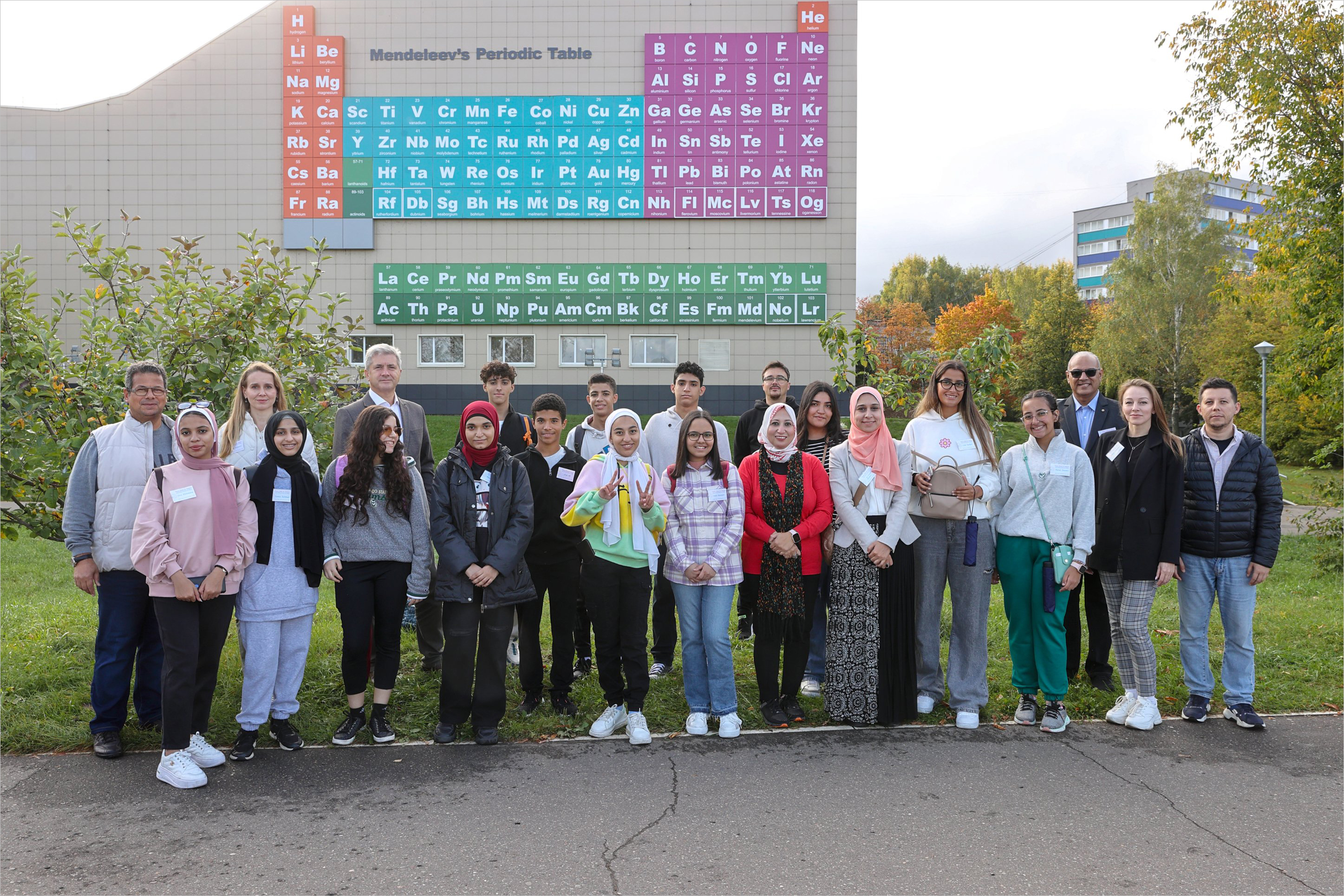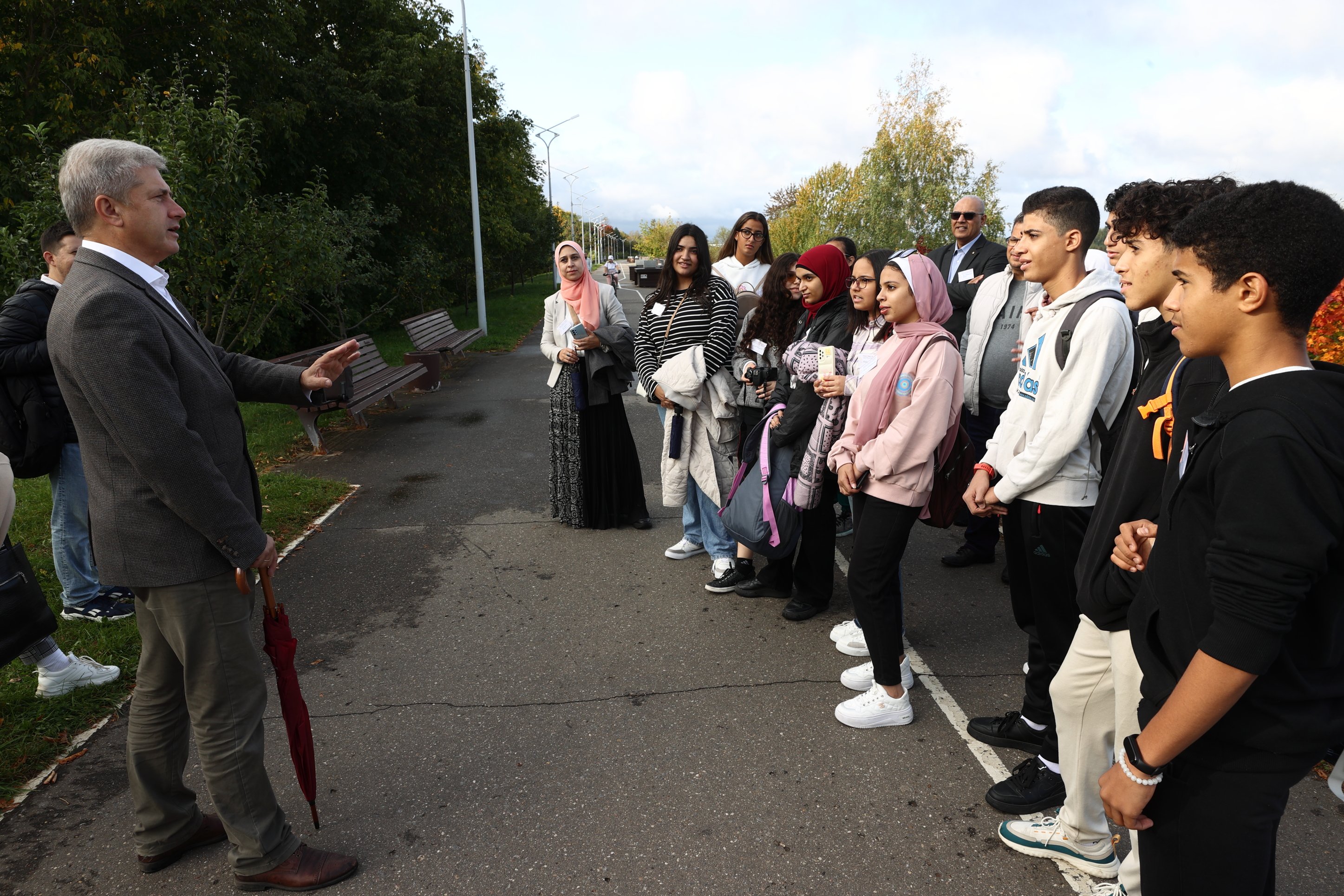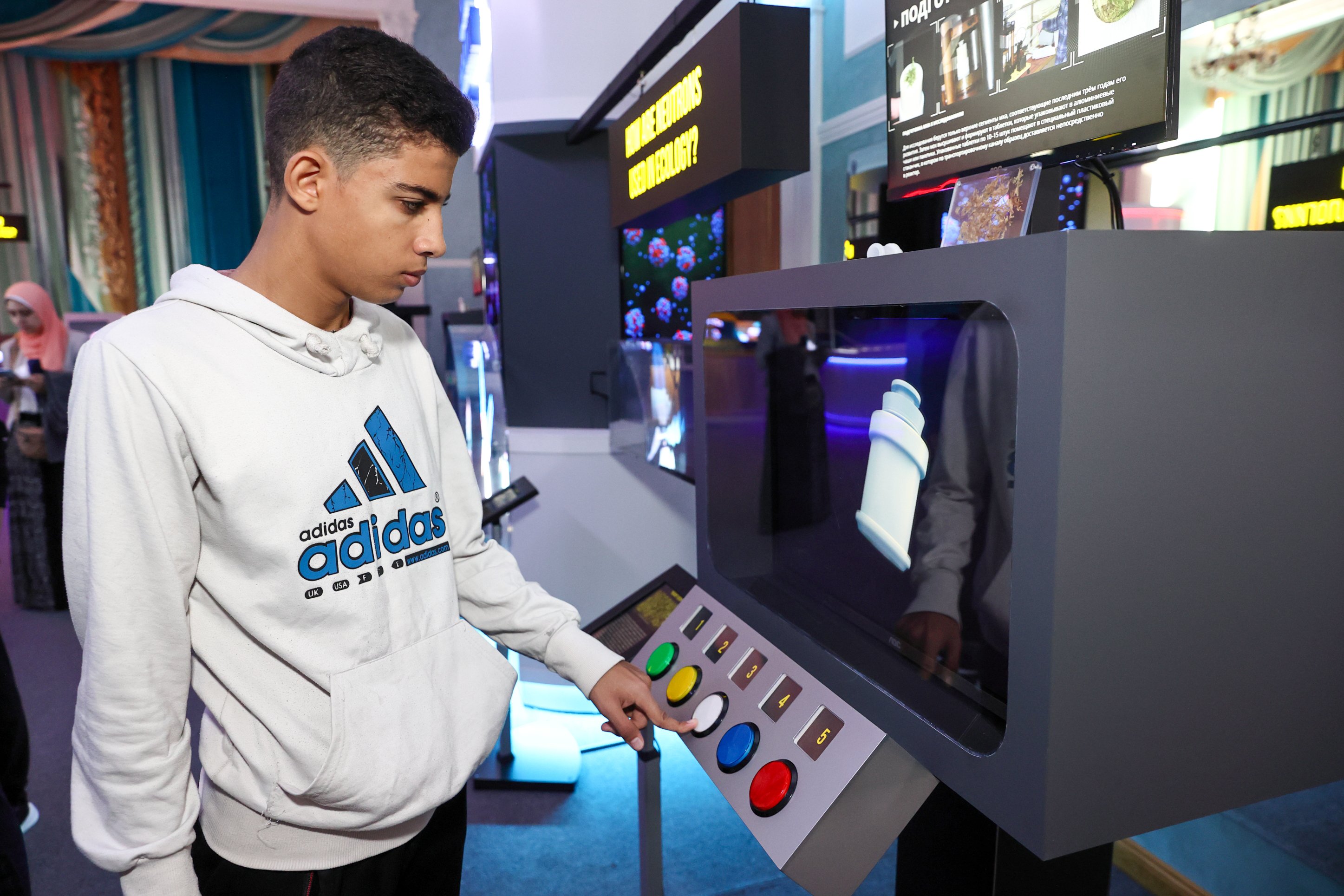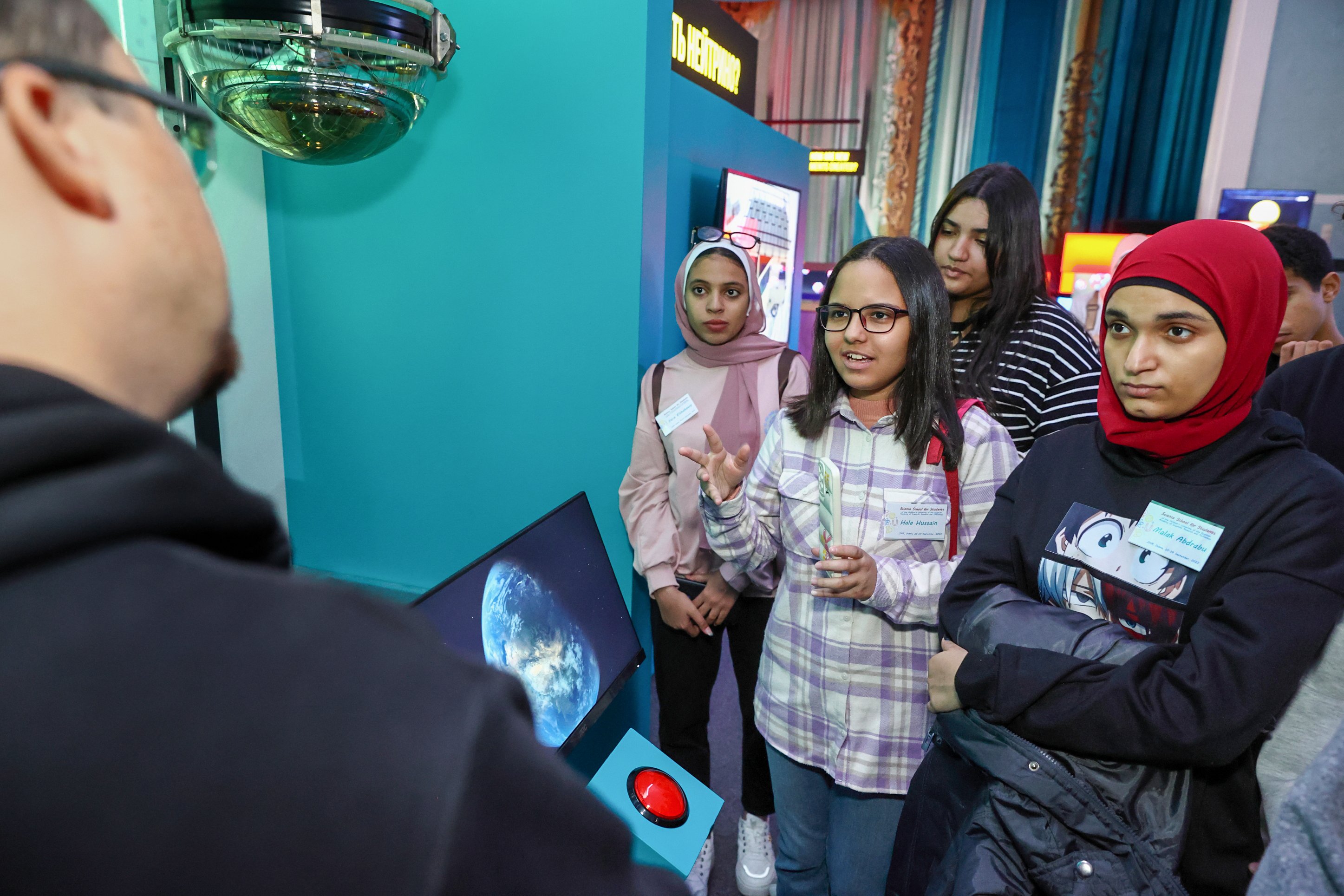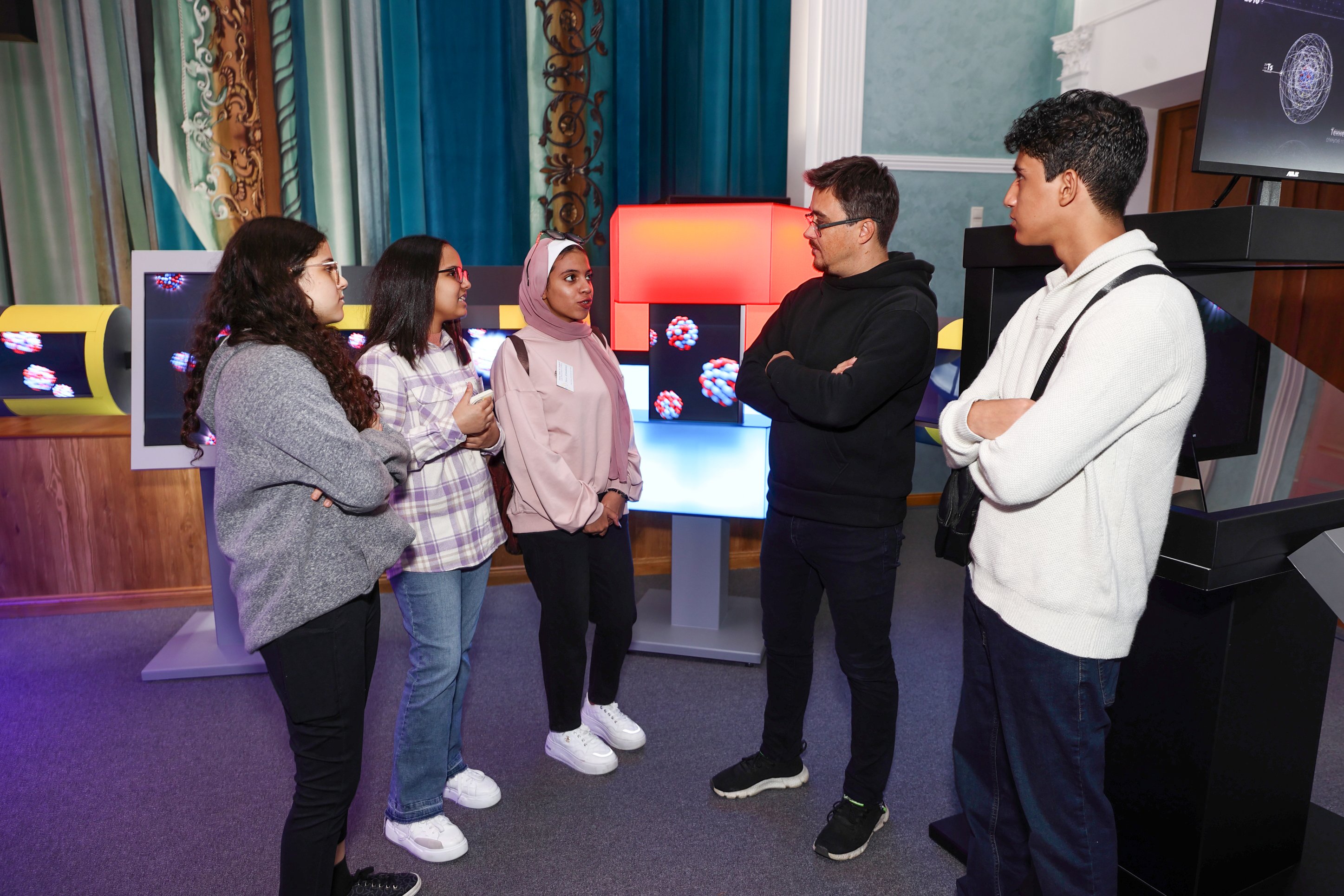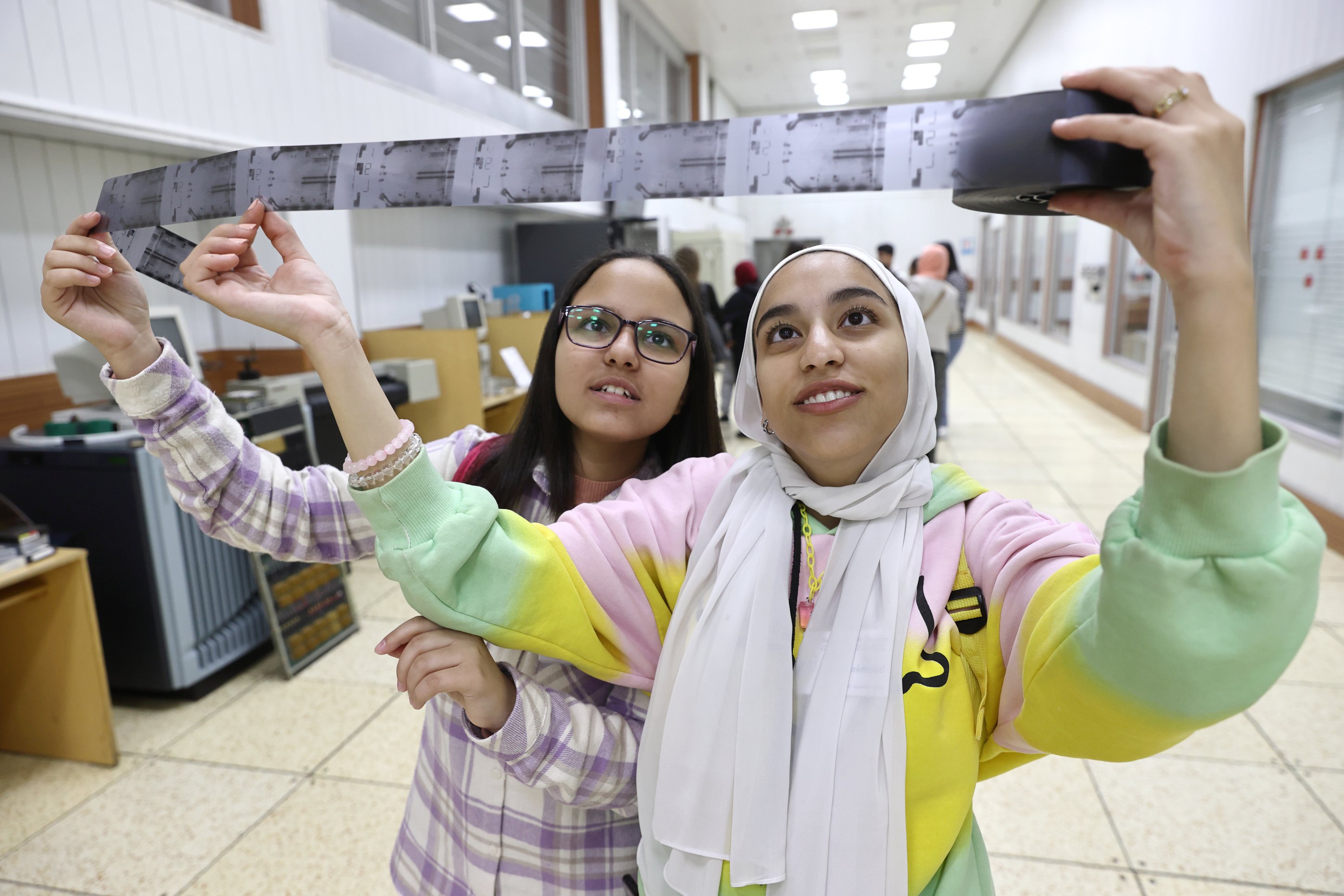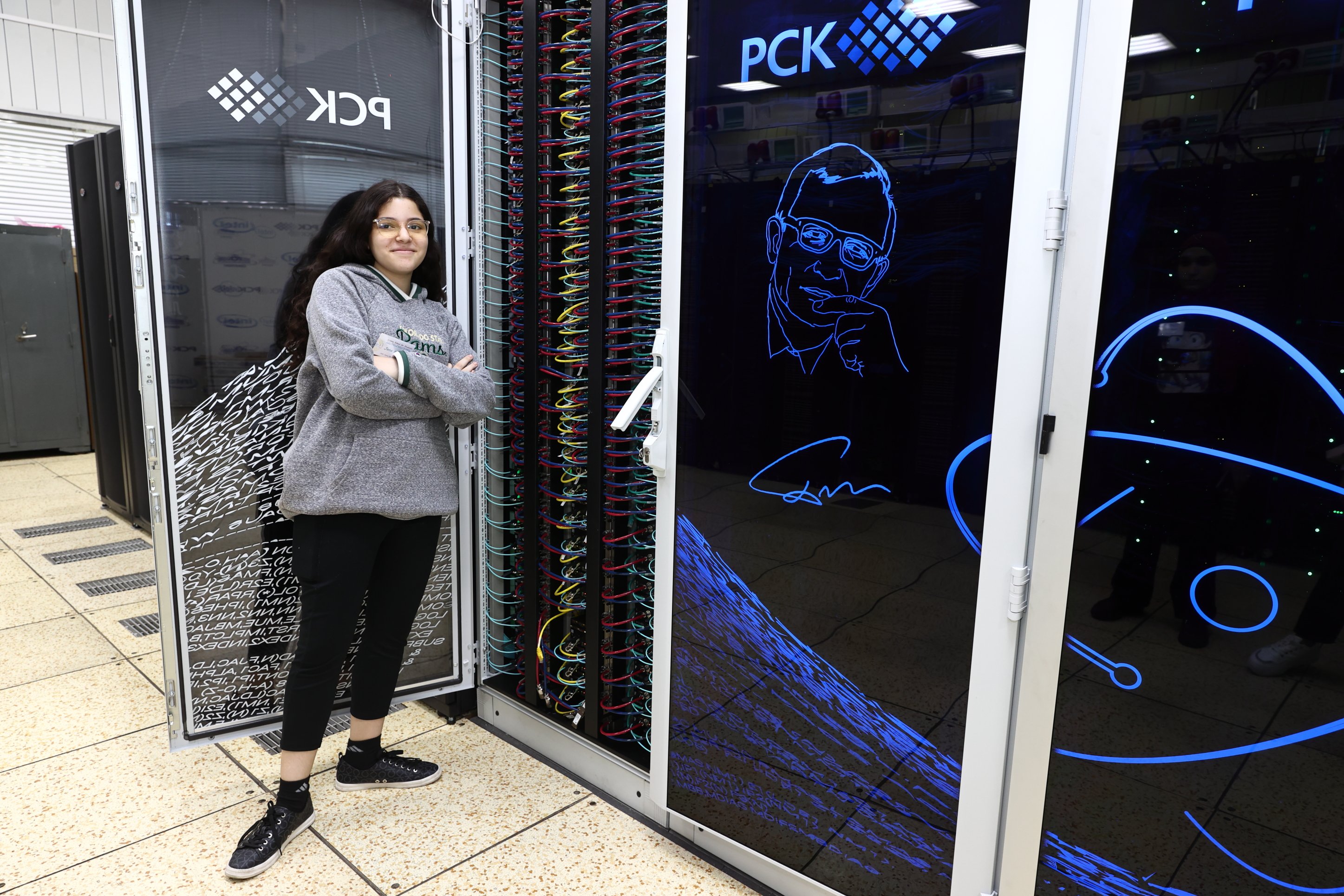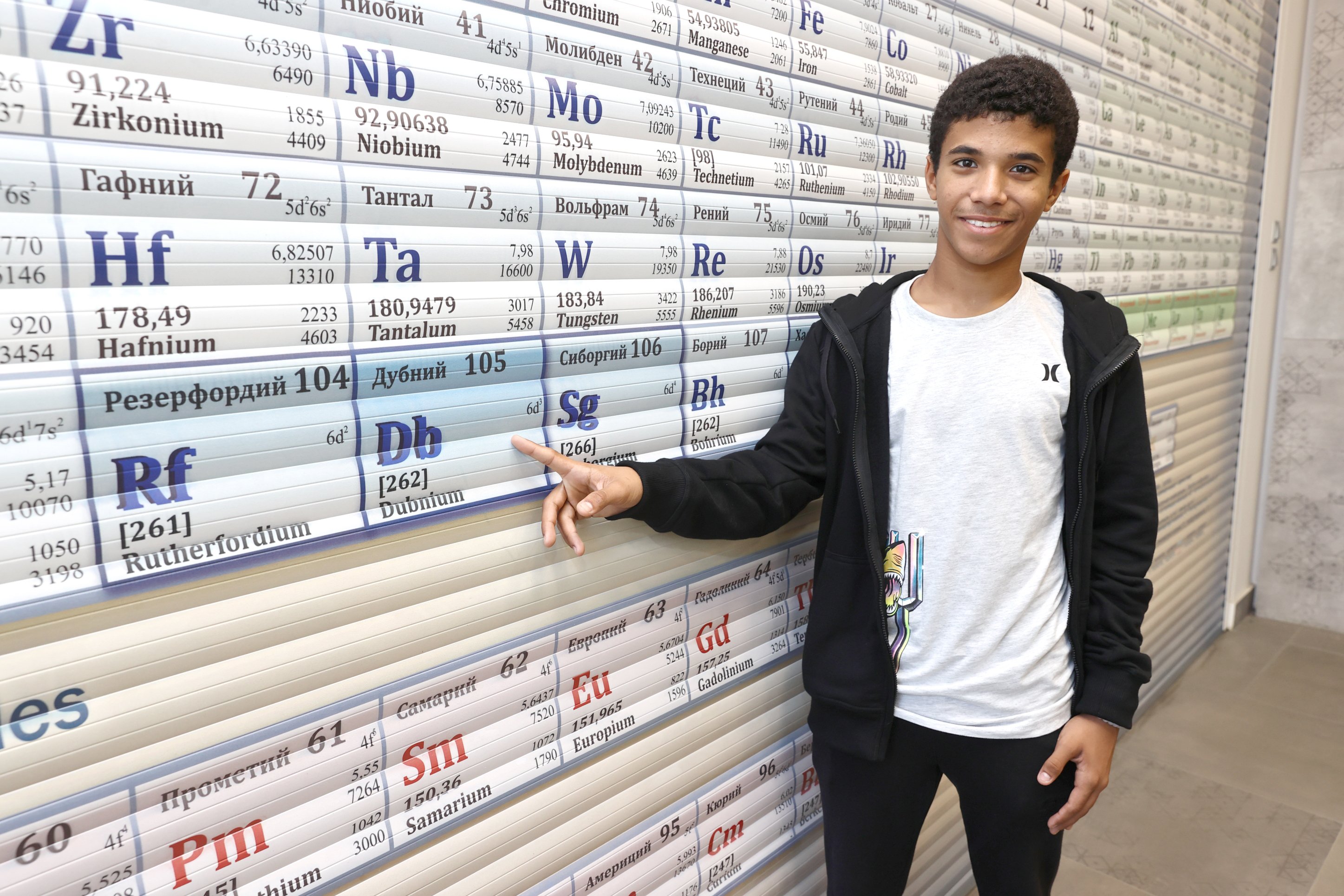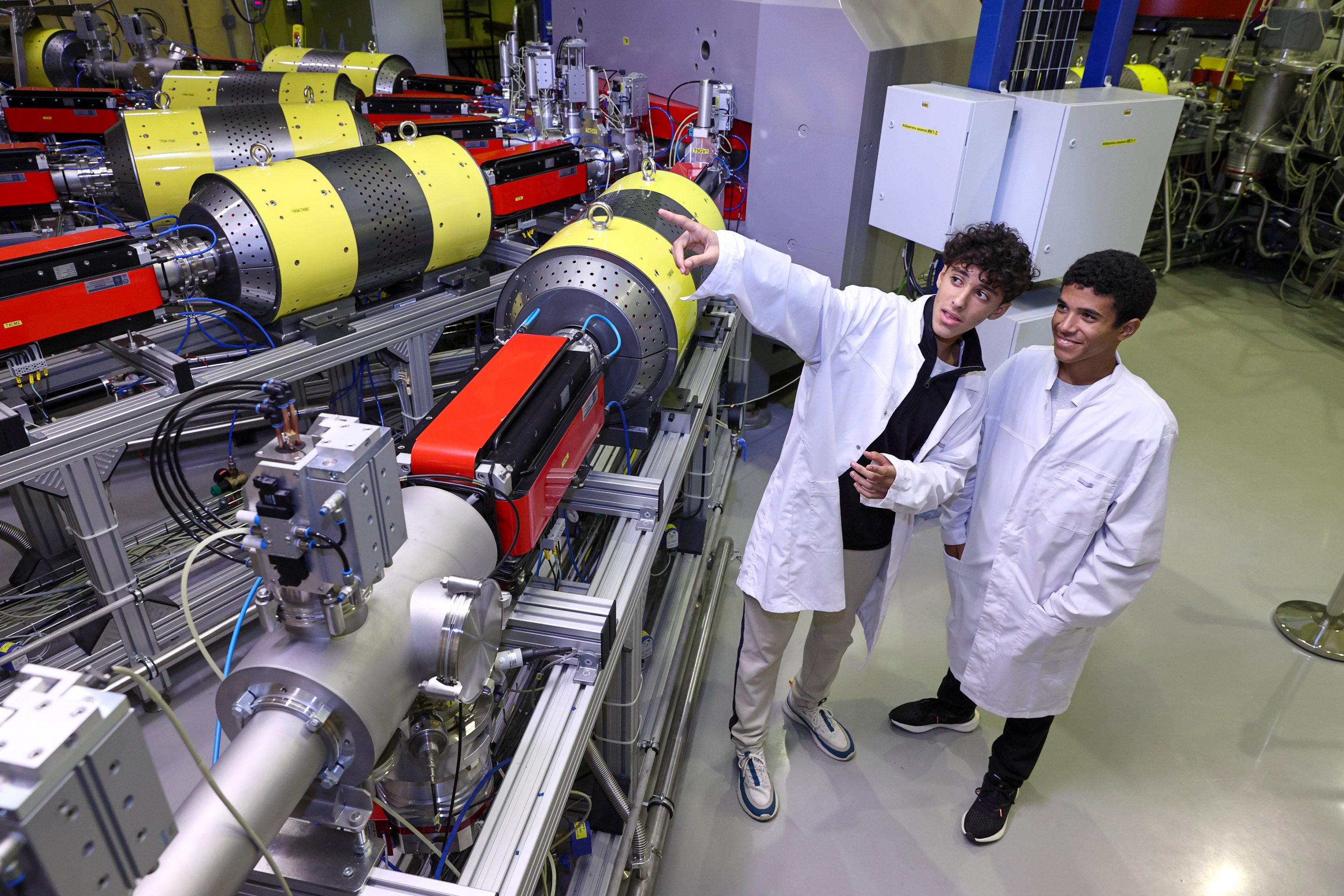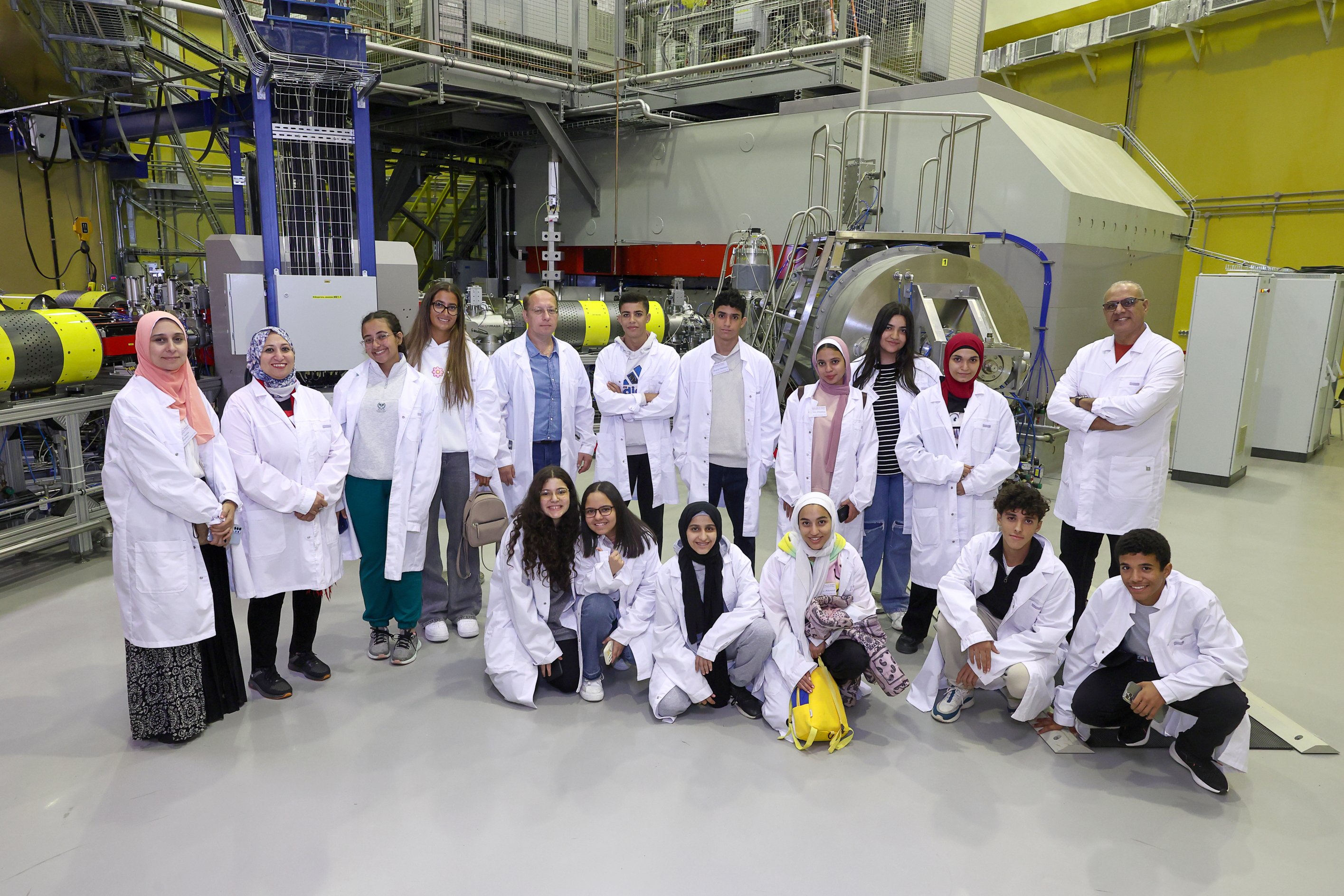JINR Science School for students from Egypt started
News, 26 September 2023
On 25 — 30 September, JINR is hosting the third Science School for students of the Children’s University of the Academy of Scientific Research and Technology of Egypt.
Dmitry Kamanin, Director of the JINR University Centre, welcomed the participants of the school near the largest Periodic Table of the Elements in Eurasia. Then the students visited the interactive exhibition of the Mir Cultural Centre, JINR Basic Facilities, where they listened to an introductory lecture about the Institute by the software engineer of the Laboratory of High Energy Physics at JINR, Nikita Sidorov.
On the first day, the schoolchildren went on a tour of the Laboratory of Information Technology guided by a MLIT researcher Igor Pelevanyuk, and the Superheavy Element Factory at the Laboratory of Nuclear Reactions at JINR.
On Tuesday and Thursday, 26 and 28 September, participants will attend four workshops of the University Centre organized by Yuri Panebrattsev’s team. On 27 September, the Egyptian students will tour Moscow’s sights.
On 29 September, Egyptian students will visit VBLHEP to learn more about the NICA Megascience Project. At the site of the Laboratory of Nuclear Problems at JINR, in the Green Laboratory, a DLNP junior researcher Alexander Voytishin will introduce the schoolchildren to the operation principle of the Wilson cloud chamber, an outdated detector of charged particle tracks. A leading researcher Ivan Lomachenkov will carry out physics experiments for schoolchildren at UC. The school will conclude with the awarding of certificates to participants.
Dmitry Kamanin, Director of the JINR University Centre, spoke about the cooperation between JINR and Egypt in personnel training and the selection process of students for participation in the current event.
“The Arab Republic of Egypt pays special attention to education and training issues in cooperation with JINR. After joining JINR as an Associate Member in 2009, Egypt started sending participants to international student training programmes. Three hundred young people have already completed these internships. In addition, about a hundred more took part in the INTEREST and START programmes for young scientists. It is a well-known fact that the training of personnel for modern science and for work with a complex scientific infrastructure requires modern approaches, including the stimulation of talented schoolchildren so that they continue to calculate their scientific trajectory consciously. As our Egyptian partners say, getting schoolchildren interested in physics is a very important task for Egypt. And for JINR, the task is to make the Institute a home away from home for some of them in the future.
The opportunity to experience big science generates motivation, and students are selected for a visit to Dubna rigorously. The Children’s University in Egypt cooperates with a number of Egyptian universities and research organizations on career guidance for future scientists. A visit to JINR provides an excellent opportunity to see the large infrastructure and gain international work experience for those of the 250 applicants who actively worked at weekly seminars and passed written and oral exams. Of those fifty who succeeded in physics, 15 were selected based on interviews that took into account their communication and language skills. In total, 39 future Egyptian scientists, who have been confidently paving their scientific path in physics since high school, have already come to Dubna, to JINR.”
